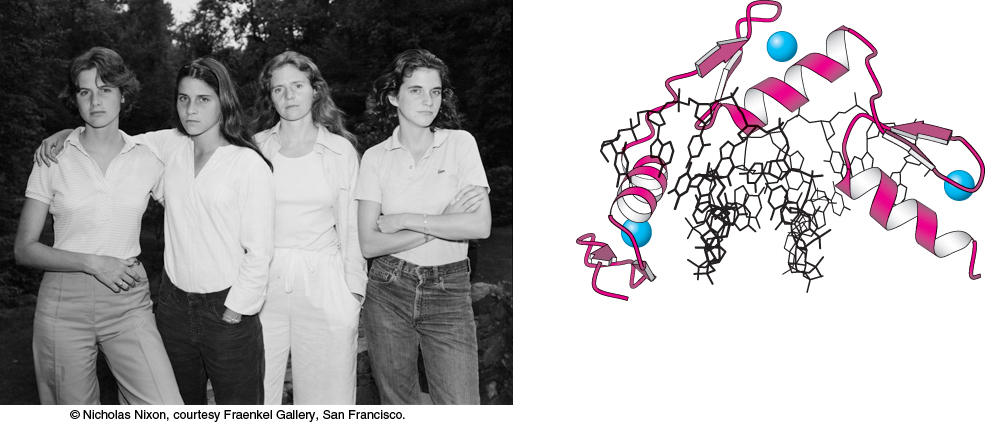DNA, RNA, and the Flow of Genetic Information
CHAPTER
4
105

OUTLINE
DNA and RNA are long linear polymers, called nucleic acids, that carry information in a form that can be passed from one generation to the next. These macromolecules consist of a large number of linked nucleotides, each composed of a sugar, a phosphate, and a base. Sugars linked by phosphates form a common backbone that plays a structural role, whereas the sequence of bases along a nucleic acid strand carries genetic information. The DNA molecule has the form of a double helix, a helical structure consisting of two complementary nucleic acid strands. Each strand serves as the template for the other in DNA replication. The genes of all cells and many viruses are made of DNA.
Genes specify the kinds of proteins that are made by cells, but DNA is not the direct template for protein synthesis. Rather, a DNA strand is copied into a class of RNA molecules called messenger RNA (mRNA), the information-

Crick called this scheme the central dogma. The basic tenets of this dogma are true, but, as we will see later, this scheme is not as simple as depicted.
106
This flow of information depends on the genetic code, which defines the relation between the sequence of bases in DNA (or its mRNA transcript) and the sequence of amino acids in a protein. The code is nearly the same in all organisms: a sequence of three bases, called a codon, specifies an amino acid. There is another step in the expression of most eukaryotic genes, which are mosaics of nucleic acid sequences called introns and exons. Both are transcribed, but before translation takes place, introns are cut out of newly synthesized RNA molecules, leaving mature RNA molecules with continuous exons. The existence of introns and exons has crucial implications for the evolution of proteins.